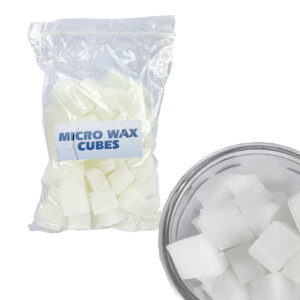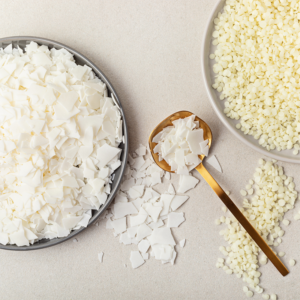STORE INFO
www.GeneralWax.com
The Candle Superstore
The Candle Superstore
STORE INFO
When crafting candles, deciding which wax you’ll use is a crucial part of the production as well as the performance of your candle. Each wax is different and usually designed to do a certain purpose, which is why many candle makers are sometimes surprised to know they may need an additive to ensure they get the best quality candle out of their wax. In this blog our candle making expert will go over what additives are and why you may need them.

Additives are additional products/ingredients that you can add to your candle wax to improve the quality of the finished product.
Currently, we carry 10 different candle additives all of which have a different purpose to ensure the best performance and quality of your candles.
Note: It’s important to understand before using additives that some waxes are already blended with additives so there is no need to add additional additives. However, most wax described as a base paraffin wax meaning they have been blended with paraffin but there were no performance enhancing additives blended in at the time of its manufacturing will likely need an additive such as our Vybar 260.
Wax additives can help reduce product imperfections as well as the performance of your candle, they may also enhance the appearance and overall lifespan of your product.

Wax additives can split into 3 distinct groups.
Polymers: Polymers also known as synthetic polyethylenes and copolymers. These additives are used to improve the appearance and performance of a candle. Vybars are the most commonly used polymer to improve opacity, hardness, fragrance retention and color.
Microcrystalline Waxes: Microcrystalline waxes are used to harden wax, glass adhesion in container candles and elevating fragrance load.
Individually Based Solution Additives: Stearic Acid, Stearin, Mineral Oils, Mottling Oils, Polysorbate, UV Light Inhibitor and UV Light Stabilizer, EVA, Petrolatum, Polyethylene, Container Maker and Universal Additive are mostly used to improve the appearance and to enhance the scent and color lifespan.
There are many pros and cons to using additives as they do help enhance your candle wax but some additives have unnatural ingredients that some candle makers dislike. Ultimately though you do not have to use additives if it does not fit into your candle making process a good alternative for an additive to harden your candles as well as staying natural would be adding Beeswax to your wax.
To learn in explicit details about each of our additives please read our previous blog
Leave a Reply
You must be logged in to post a comment.